BIOLOGY BUSINESS CHEMISTRY COGNITIVE SCIENCE COMMUNICATION COMPUTER SCIENCE DATA SCIENCE DESIGN INFORMATION SCIENCE ECONOMICS EDUCATION AND LEARNING ENGINEERING ENVIRONMENTAL STUDIES FINANCE GAME STUDIES LINGUISTICS MATH MEDIA STUDIES NEUROSCIENCE PHILOSOPHY PHYSICS PSYCHOLOGY SCIENCE FICTION URBANISM VISUAL CULTURE SCIENCE, TECHNOLOGY, AND SOCIETY ARCHITECTURE ARTS
THE MIT PRESS IMPACT REPORT
—Report of the Committee to Study the Technology Press, 1960
It is difficult to overstate the significance of a first-class university press. The function and mission of MIT require such a press.
60 years of big ideas A leading university publisher Spotlight: Global reach Opening science and scholarship Amplifying diverse voices Spotlight: Breaking the mold Building community Future thinking 2 4 6 8 10 12 14 16 Table
contents
of
Great books don’t come into the world by accident. They require fine authors but also publishers that can spot and support talent, particularly when authors are from diverse backgrounds. The MIT Press is one such press, and it is shaping the entire publishing world and moving this industry toward where it should be.

years of big ideas 60
—Ainissa Ramirez, author of The Alchemy of Us
A note from the Director

Among the many joys of working in publishing is the power to communicate vital insights and discoveries, ignite understanding, and disarm disconnection. Deeply researched content, honed through an editorial process, is still the best vehicle to achieve connection across vast distances with the thoughts of another human being. This content, when made accessible to all in a diversity of formats, becomes a vital conduit through which new knowledge can be shared and mobilized.
Sixty years into our adventures in publishing, the MIT Press team has a lot to celebrate. We continue to focus on diverse perspectives from the most credible, creative, and interdisciplinary minds. In 2021, the Press launched the Grant Program for Diverse Voices to support and draw attention to chronically underrepresented perspectives on critical topics spanning the arts, humanities, and sciences. We continue to seek new audiences as well. In collaboration with the Candlewick Press, the MIT Press’s dedicated imprints for children—MIT Kids Press for children and MITeen Press for young adults—convey mind-expanding knowledge to a new generation of readers.
The Press has a well-earned reputation for anticipating and creatively reimagining the role of publishing within the institutional research enterprise. The MIT Press’s book and journal publishing programs are integral to the Institute’s influence in the academy of arts and sciences and its assertive support of technology. And our bold open access initiatives like Direct to Open are drastically expanding access to this scholarship, beyond the gates of MIT to the world at large. Democratizing access to trustworthy information, we believe, has never been more critical.
We are especially grateful to our Institute partners and our generous donors for supporting our mission. To ensure that we can continue to push the boundaries of publishing for the public good for decades to come, we have established the MIT Press Fund for the Future. Contributions to the MIT Press through the Fund will directly enable more open knowledge, bring more visibility to diverse voices in STEM, and help sustain our commitment to publishing excellence and innovation. We look forward to keeping you updated in the months ahead on our award-winning publications and efforts like those described in the pages that follow.
Amy Brand, PhD Director and Publisher of the MIT Press
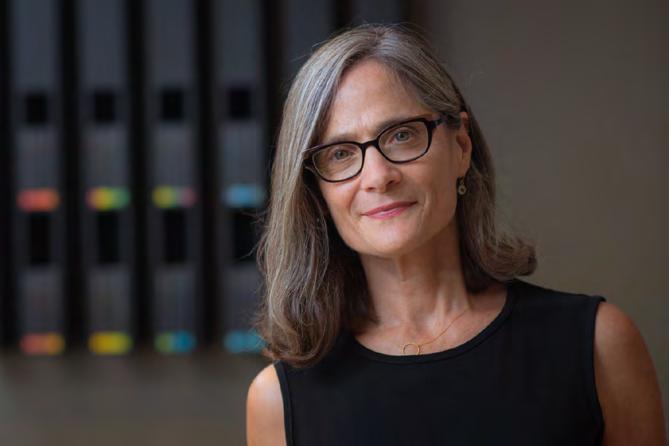
3
Amy Brand. Photo: Gretchen Ertl
If MIT Press were a literary salon, it would be the place where an art historian and a crypto entrepreneur get into a fight about the nature of digital art while in another corner, an architect and an aerosols expert hash out designs for a covid-safe workspace, and in another, science fiction writers and AI researchers debate the nature of intelligence. I hope in the next 60 years it continues to push boundaries in finding ways to make ideas mingle and cross-pollinate from the widest possible range of disciplines.
A leading university publisher

Established in 1962, the MIT Press has spent more than six decades at the forefront of innovation and excellence in the scholarly and scientific publishing community.
BOOKS
From the early years of the 1960s, distinguished publications like Hans Wingler’s Bauhaus would come to embody the Press’s unparalleled legacy of beautifully produced works, many of which are classics with continued influence. We build on this legacy through projects like Designing Motherhood by Amber Winick and Michelle Millar Fisher, recipient of the prestigious AIGA 50 books / 50 covers award.
—Gideon Litchfield, Editor in Chief of Wired magazine
OUR BOOKSTORE
books
We sell over one million books around the globe every year and publish more than and journals annually.
We remain one of the few university presses anywhere in the world to sell our titles and a carefully curated selection of books from peer presses through a dedicated brickand-mortar store. The MIT Press Bookstore located in Kendall Square is a conduit for the Cambridge community to connect with the Press, our curatorial vision, and our intellectual breadth.
DIGITAL CONTENT
We were the first publisher to make our catalog available online in 1992, followed by the creation of our influential Digital Projects Lab in 1996 to operationalize the Press’s experimental efforts in publishing technology. Building on our long history of amplifying MIT’s strengths and values, we pioneered MIT Open Publishing Services (MITops), a new hosting and publishing services operation launched in 2021. We also publish the MIT Press Reader—the first university press magazine of its kind—which reaches a global audience of more than four million readers per year.
THE MIT PRESS IMPACT REPORT 4
350 40
JOURNALS
The Press began publishing journals in the 1970s and continues to push the edges of innovation in journal publishing.
• In 2021 we transitioned the flagship journal of the American Academy of Arts and Sciences, Dædalus, to an open access publication, and have since seen the journal’s article downloads more than double year-over-year.
• The award-winning Harvard Data Science Review, first published in 2019, combines elements of a premier academic journal with those of a popular magazine to educate readers on fundamental data science research that intersects with issues that impact society.

• In response to the COVID-19 pandemic, the MIT Press and UC Berkeley launched the urgently-needed peer review overlay journal, Rapid Reviews: COVID-19, to combat misinformation about the pandemic. We are now expanding this model to review of pre-prints across infectious diseases writ large.
OPEN ACCESS

The electronic publication of City of Bits by William Mitchell in 1995 made us one of the first publishers to create open access digital content. The Press has been a leader in open access publishing ever since and has pioneered a number of major initiatives to make more scholarship freely accessible to the public. This includes Direct to Open, a new model for open monographs that harnesses the collective support of libraries to enable equitable access to vital scholarship.
YOUNG READERS
The Curie Society was the MIT Press’s first foray into young adult publishing and was a selection of the 2022 Hal Clement Notable Young Adult Books List for the American Library Association. The Press continues to expand in this area through our teen and children’s imprints in collaboration with Candlewick Press, MIT Kids Press and MITeen Press.

5
Spotlight: Global reach
The MIT Press extends the reach of cutting-edge academic research while supporting the development of bold new ideas in key areas of study. Our editors work with the world’s best researchers, scientists, and scholars to publish rigorously peer-reviewed books and journals for distinct readerships:
• scholarly and professional books
• trade books
• textbooks
• journals
As the production of “content” and misinformation becomes ever more automated, the work of human scholars and researchers becomes ever more necessary. Publishing the highest quality nonfiction requires human knowledge, labor, and craft. It is time intensive. It does not scale. The MIT Press advances the work of scientists, engineers, designers, and social researchers—those who bring the knowledge, skills, and critical perspectives we need to confront the disparities of the present as we build a better future.
The MIT Press and its editors support our authors to write for the widest international audiences. We publish and promote their work for maximum access because we believe it deserves to be widely known and used. Our readers are thoughtful people, leaders in an interconnected world, who embrace new ideas and insights. Our work is dedicated to them and to the change they are making.
Gita Manaktala Editorial Director

THE MIT PRESS IMPACT REPORT 6
Gita Manaktala
Photo: Kelley Travers
The Press sees a higher percentage of sales from outside of the United States than any other university press, and
of our website visitors are international.
The MIT Press leads the way in publishing important, timely, and interesting material from world-class experts. Today the Press is actively expanding the range of perspectives from which we can all learn, while innovating for the future of scholarly communication.
—David Kaiser, Germeshausen Professor of the History of Science and Professor of Physics, MIT
The Untold Story of the World’s Leading Environmental Institution: UNEP at Fifty
by Maria Ivanova
Author Rena Selya, MIT Institute Professor Emeritus Phil Sharp, and MIT Professor for Cancer Research and Biology Richard Hynes pose with copies of Selya’s book, Salvador Luria: An Immigrant Biologist in Cold War America, during an event at MIT’s Salvador E. Luria Auditorium cohosted by the MIT Press Bookstore and the Koch Institute for Integrative Cancer Research. Luria was a Nobel-winning biologist who was equally passionate about science and political engagement in Cold War America. He was a longtime MIT professor and founding director of the MIT Center for Cancer Research.
“Having my book published open access has made environmental and climaterelated content freely available around the world. With UNEP based in Nairobi and communicating with developing countries, open access content allows vital information to get to places where people have no credit cards for ordering books and no assured delivery mechanisms. Open access publishing at MIT Press paves the way for more policy discussions, better processes, and greater impact worldwide, from Nairobi to Northeastern.”
—Maria Ivanova, Director of the Policy School at Northeastern University



7
70
Maria Ivanova
%
Opening science and scholarship
As part of MIT’s long-standing commitment to openly sharing science and scholarship, the MIT Press leads the industry in the democratization of information. Many of our award-winning publications are “born open” to advance education and understanding around the world.
• In 2021, the MIT Press established Direct to Open (D2O), a new collective-action model that makes the publishing of open access monographs more sustainable through institutional partnerships. In its first two years, over 320 institutions signed on to D2O and funded the open publication of more than 120 scholarly monographs, which were then accessed by readers nearly 250,000 times.

The MIT Press is an organization that takes worthy risks—not just of the big variety, but the equally important little ones, the ‘yesses’ along the way to experimentation in format, licensing, contributors, and content. There’s no other organization like it in supporting rigorous, creative expression through the written word.
—Jonathan Zittrain, George Bemis Professor of International Law at Harvard Law School
Computational Linguistics was published under a subscription model until 2009, and transitioned to open access in 2010. Usage of the journal has increased since then.
percent
• Our journals division publishes over 2,000 articles every year—40 percent of which are open access. We publish many open access journals, including the American Journal of Law and Equality, Quantitative Science Studies, Network Neuroscience, and the Journal of Climate Resilience and Climate Justice
THE MIT PRESS IMPACT REPORT 8
500
• The MIT Open Publishing Services (MITops) program developed in concert with our partner, the Knowledge Futures Group—offers professional publishing support for open access content. MITops provides a portfolio of services to missionaligned entities. These include peer review and editorial development; professional copy editing and design; marketing and publicity; and hosting on the PubPub open source platform. Through MITops, the MIT Press enables other content producers to take advantage of open access publishing opportunities.
The MIT Press is not just a leader in publishing open access books and journals, but also in exploring new ways to support them. Its combination of first-rate scholarly publications with creative action on the business and technology of delivering them is very rare and welcome.
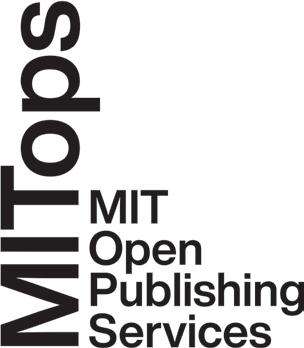
—Peter Suber, Senior Advisor on Open Access, Harvard Library; Director of the Harvard Open Access Project
• In 2022, in partnership with the Digital Publications Initiative of Brown University, the Press launched a digital-first open access publication, A New Vision for Islamic Pasts and Futures by Shahzad Bashir, which offers a new model for immersive, media-enabled web publications of the future.


• In the early 2000s, the Press developed CogNet, an online community for the cognitive sciences. This community was conceived of and developed by the Press’s Digital Projects Lab with the aim of making scholarship in more accessible and interactive. This project is still in operation today.
1,000,000
In 2022 alone, our book chapters were downloaded from MIT Press Direct over times and our journals content was cited more than 100,000 times.
9
Amplifying diverse voices
Publishing new ideas from diverse perspectives is a key priority at the MIT Press, epitomized by our best-selling book of 2022, Ruchika Tulshyan’s Inclusion on Purpose, which tackles issues of diversity and inclusion in the workplace.
With the support of generous donors, we have amplified our efforts through new initiatives such as our Grant Program for Diverse Voices, benefitting authors whose voices and perspectives have historically been underrepresented across the sciences, arts, and humanities.
Our Fund for Diverse Voices enables us to offer competitive advances to accomplished authors, cover the cost of high-quality production features that may not be financially feasible otherwise, and ensure that these works reach the widest readership possible through expanded marketing efforts.
Power On! by Jean J. Ryoo and Jane Margolis
A diverse group of teenage friends learn how computing can be personally and politically empowering and why all students need access to computer science education.
Students tackle questions including:
• What are ways that technology is creating social good as well as harm in today’s world?
• Can robots be racist?
• Why does underrepresentation of students of color and females matter?
• What can be done to change this underrepresentation?
• What ideas do you have for a technological innovation that could address a social problem you care about?
• How can we help support all students in getting the education they deserve and need?
“We wrote Power On! to fill a gap in current computer science classrooms and out-of-school programs by providing an accessible educational tool for discussing pressing issues of equity and ethics in tech, while motivating all youth to learn about computer science, regardless of their career path. This graphic novel serves as an engaging way to learn about current research in computer science and computing education.”
 —Jean J. Ryoo and Jane Margolis
—Jean J. Ryoo and Jane Margolis
2,300
In the last 10 years, we licensed more than translations of our works in 45 languages worldwide.
THE MIT PRESS IMPACT REPORT 10
I adored Power On! This graphic novel from MIT Press does an amazing job of contextualizing technology and social justice issues. The embedded references and bios of marginalized leaders in the tech and tech/justice work elevate this work from a fun, fictional read to a powerful instructional tool. This graphic novel will empower and inspire youth and adults to engage with technology on a deeper level.
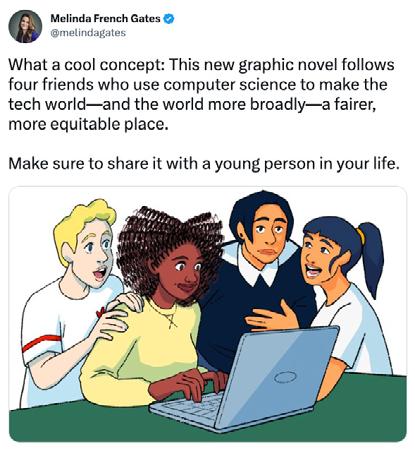
The inaugural recipients of the MIT Press Grant Program for Diverse Voices

Mortevivum: Photography and the Politics of the Visual by Kimberly
Juanita Brown



Reparative Media: Cultivating Stories and Platforms to Heal Our Culture by Aymar
 Jean “AJ” Christian
Jean “AJ” Christian
Our Queer Universe: Deconstructing Definitions, Producing Particle Beams, and Examining Entangled Identities by Jessica Esquivel

Jardineros/Gardeners: Cultivating Los Angeles’ Front Lawn with Brown Hands, Migrant Networks, and Technology by Álvaro Huerta

A Candle in the Cosmos: Henrietta Swan Leavitt and the Extraordinary Legacy of Her Luminous Universe by Leila McNeill
An Anthology of Blackness: The State of Black Design edited by Terresa Moses and Omari Souza
Canceled: How Smartphones and Social Media Democratized Public Shaming by Allissa Richardson

Emergent Economies of Art and Technology: Temporalities and Aesthetics of Art and Practice by Ashley Lee Wong

All book titles are working titles, and may be subject to change.
—Morgan Green-Griffin, Librarian MLS, CVA

11
Álvaro Huerta Leila McNeill
Terresa Moses
Omari Souza
Allissa Richardson
Ashley Lee Wong
Aymar Jean “AJ” Christian
Photo: Felton Kizer
Jessica Esquivel
Kimberly Juanita Brown
Morgan Green-Griffin
Spotlight: Breaking the mold
The Curie Society
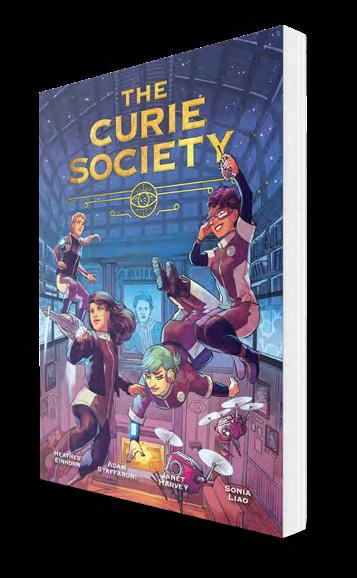 by Heather Einhorn, Adam Staffaroni and Janet Harvey
by Heather Einhorn, Adam Staffaroni and Janet Harvey
Like most publishers, the MIT Press frequently grapples with the question of what types of books are the right fit for our list. This is a healthy and critically important exercise if we want to stay true to our mission of pushing the boundaries of university-based publishing.
However, few of the books we’ve published would appeal to my teenage daughter—who, though a voracious bookworm, is not particularly interested in nonfiction or STEM topics (which represent the majority of the books I acquire and publish). That all changed in 2021 with the release of The Curie Society, a young adult original graphic novel about a fictional society of college girls who save the world using STEM skills and teamwork. My daughter told me she found the book “inspiring,” that the characters “broke gender and racial stereotypes,” and that the diversity of the characters was “treated as normal, as if these are just smart girls doing what they do best and were being recognized for it.”
Hearing that from my daughter means the world to me. When I was her age, it was uncomfortably obvious that it was abnormal to be Black or a woman in STEM. And that’s the power of fiction, and illustrated fiction, in particular: It can be used to imagine a world free of—or in direct opposition to—barriers, injustice, and stereotypes.
The Autobiography of a Transgender Scientist by
Ben Barres
One of the books I’m proudest of having worked on is Ben Barres’ The Autobiography of a Transgender Scientist. I knew Ben a little and had been in touch with him about the possibility of his writing a book on neuroscience. He came back to me and shared that he would love to, but wouldn’t be able to because he was ill—and then I learned that he had passed away.
We later discovered that Ben had, in the last months of his life, written an autobiography and donated the manuscript to the Society for Neuroscience. They licensed the manuscript to us, and so I edited his writing posthumously—which was very nerve wracking. I knew it was an incredibly personal story; he talks about his experiences being an undergrad at MIT, his transition, and the challenges of his life. I was dealing with something very sensitive, and throughout the editing process I couldn’t go back to him and ask questions.
It’s a book I am very proud of because of Ben’s legacy, because of the person he was, and because every person I know who has read it has been transformed by it in some way.
Robert Prior Executive Editor Biomedical Science, Neuroscience, and Trade Science

THE MIT PRESS IMPACT REPORT 12
Jermey Matthews Senior Acquisitions Editor Physical Sciences, Engineering, and Mathematics
Jermey Matthews
Photo: Fitz-Robert Aaron
A selection of the 2022 Hal Clement Notable Young Adult Books List from the American Library Association.
A Black Gaze: Artists Changing How We See by Tina M. Campt

When I met Tina Campt in London at a conference in 2018, I was floored by her genius. It was the first time I’d heard someone speak about the much-theorized concept of the gaze in a wholly new way. It made sense of everything I’d been encountering but hadn’t seen published. I asked Tina to write for the Press. When her agent sent me the proposal for A Black Gaze, I knew it was the book I’d been seeking.

What I love about this book is Tina’s extraordinary ability to deliver difficult insights about systemic racism and the weight of Black precarity while simultaneously celebrating Black joy and achievement in spite of these burdens. She invites the reader to experience this reality through her lyrical, forthright, and compelling writer’s voice. If you let it, this book will change you. It’s a gift.
Victoria Hindley Acquisitions Editor Design and Visual Culture

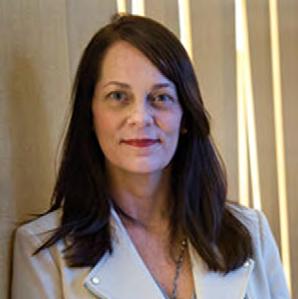
13
In this beautiful volume, Campt disrupts the normative passivity applied to art and artistry to build an (inter)active, intimate, radical and necessary Black gaze.
—Ms.
Robert Prior
Victoria Hindley
Photo: Kelley Travers
Barres is as open in memoir as he was in life, and the book teaches important, deceptively simple lessons. Science is exhilarating, and we have a responsibility to do it well, with fairness to all involved.
—Nature
Building community
We view the MIT, Kendall, and Cambridge communities as part of the MIT Press. They are ingrained in our work and an ongoing inspiration for our publishing efforts. The Press is a two-way conduit, bringing the world of ideas to the local community, at the same time that we amplify MIT’s mission to the wider world.
THE MIT PRESS BOOKSTORE

The MIT Press Bookstore has been an intellectual landmark in Kendall Square for over 40 years and is the public face of the MIT Press. Thousands of MIT students, faculty, and staff rely on the Bookstore. Tourists immerse themselves in the variety of multidisciplinary offerings; children and their parents enjoy our kids section and its large selection of age-appropriate books on STEAM topics; businesses benefit from a local bookstore with a wide selection of topics; and new customers and readers are drawn to Kendall through engaging inperson and online author events.
LOCAL EVENTS
With the MIT Press Bookstore as our anchor on campus, we work with partners across the Institute—including the MIT Libraries, the MIT Museum, the Koch Institute, MIT Open Space Programming, and more— to host talks, panels, and conversations featuring MIT Press and other authors. We also participate in community celebrations like the Boston Book Festival and Cambridge Science Festival.
SCHOLARLY COLLABORATIONS
The Press regularly collaborates with aligned MIT partners.
• MIT Technology Review: Twelve Tomorrows is an annual anthology of science fiction short stories published in partnership with Technology Review Each volume includes original stories that explore the role and potential impact of developing technologies in the near future. Nature calls the series “‘hard’ sci-fi at its best.”
• MIT Sloan School of Management: The Press partners with the Sloan School of Management for two book series: Management on the Cutting Edge and the Digital Future of Management.
• MIT Stephen A. Schwarzman College of Computing: Through the Press’s MITops program, we provide support to a new case studies series that examines the social, ethical, and policy challenges of present-day efforts in computing. The series aims to facilitate the development of responsible “habits of mind and action” for those who create and deploy computing technologies.
The MIT Press has created a highly distinguished list of books that explore the intersection of science, art, and the humanities, written with the innovation and discipline of MIT itself. The books of the Press have stimulated and provoked us to think more deeply about who we are and the world we live in.
THE MIT PRESS IMPACT REPORT 14
Author Thomas Cormen at the MIT Press Bookstore greeting a fan of Introduction to Algorithms
—Alan Lightman, novelist, physicist, and MIT Professor of the Practice of the Humanities
QUINTESSENTIAL MIT

Viewed from our offices in Kendall Square, the future looks very bright indeed, and the work of the MIT Press starts close to home. MIT-affiliated authors publish fielddefining work—like Tom Cormen, who became the lead author of Introduction to Algorithms (now in its 4th edition with over one million copies in print) when he was a graduate student under MIT professors and co-authors Charles Leiserson and Ronald Rivest.
Other MIT-affiliated authors spotlight much needed change in the world, like alumna Ngozi Okonjo-Iweala in her co-authored book Women and Leadership; explore new productivity and business models as in The Work of the Future by David Autor, David Mindell, and Elisabeth Reynolds, Global Fintech edited by David Shrier and Alex Pentland, and Working with AI by Thomas Davenport and Steven Miller; expand our understanding of the cosmos, with books like Into the Anthropocosmos by Ariel Ekblaw; and translate the latest research into bite-sized accessible introductions for our Essential Knowledge series, such as Biofabrication by Ritu Raman.
REGIONAL HISTORY WITH WORLDWIDE APPEAL
MIT is defined by its people: the faculty, staff, students, and alumni who make up the campus community. Many of our books explore MIT’s own story, including recent biographies of Nobel prize-winning biologist Salvador Luria and nanotech pioneer Mildred Dresselhaus, as well as books like Technology and the Dream which collects personal reflections on the Black experience at MIT. The Press also explores MIT’s relationship with the broader community of Kendall Square, “the most innovative square mile on the planet,” with books like Where Futures Converge by Bob Buderi and Born in Cambridge by Karen Weintraub and Michael Kuchta.

15
Readers gather at MIT’s Open Space for an event co-sponsored by the MIT Press Bookstore celebrating the release of MIT Kids Press book Ada and the Galaxies by Alan Lightman and Olga Pastuchiv.
100
The beloved MIT Press Essential Knowledge series has published nearly volumes of accessible and concise books on topics of current interest—offering foundational knowledge that informs a principled understanding of the world.
Future thinking
University presses catalyze the creation of new knowledge and safeguard its diffusion from market forces. To do so, they often rely on endowment funding, grants, and other donations to support individual publications and experimental publishing initiatives.
The MIT Press is unique among our peers in our commitment to lead by example in business model, technology, and design innovation. To ensure that we can continue to push the boundaries of publishing for the public good for decades to come, we have established the MIT Press Fund for the Future, gifts to which directly benefit these initiatives:
• Public understanding of science: Mobilizing cutting edge-science and research for greater social impact through writing excellence, by providing academic scientists and first-time book authors with the support needed to make their ideas optimally impactful and accessible to general readers, policymakers, and the media.
• Diverse voices: Providing grants for work by authors who bring excluded and chronically underrepresented perspectives to the fields in which the Press publishes across the sciences, arts, and humanities.
• Open knowledge: Enabling open access to scores of academic books and journals each year.
• Publishing innovation: Improving the public’s trust in science and combating misinformation in the public sphere through mold-breaking publishing models like Rapid Reviews: COVID-19
• Community engagement: Enriching the Kendall Square community through the MIT Press Bookstore and numerous community events each year.
• Children and STEAM: Fostering a love of nonfiction and learning in younger generations with the children’s section of our Bookstore and the new MITeen and MIT Kids Press imprints.
Our authors and publications regularly earn the highest international accolades for their work, such as the Nobel Prize; Pulitzer Prize; and PROSE Awards. Press director Amy Brand was even nominated for an Emmy Award.
• Design excellence: Continuing our legacy of award-winning design through finely crafted books and journals.
To discuss contributions to the MIT Press, please contact Kathryn DeNitto, Senior Development Officer, at kdenitto@mit.edu
THE MIT PRESS IMPACT REPORT 16
The MIT Press is something exceedingly rare—an iconic brand that is not content to rest on its laurels. For 60 years they have brought an entrepreneurial spirit and innovation to the field of academic publishing.
—Vilas Dhar, President, Patrick J. McGovern Foundation
A message from MIT President Sally Kornbluth

For over six decades, the MIT Press has served as a lodestar for MIT, gathering, explaining, and disseminating new ideas to inform society of a range of extraordinary breakthroughs at the Institute. As a nexus between MIT and the world, the Press is an essential resource, elevating diverse voices, supporting women in STEM, engaging in children’s STEAM publishing, and transitioning a high-impact academic book and journal program to become openly accessible to all. By creating new understanding and sharing MIT’s outstanding story and scholarship worldwide, the MIT Press plays a crucial role in making the Institute’s mission of creating a better world a reality.
Sally Kornbluth President Massachusetts Institute of Technology
17
Sally Kornbluth
Photo: Gretchen Ertl
For almost 60 years, the MIT Press colophon has served as the symbol of the Press’s distinctive design and innovative publishing program. It graces the spines of all our books and journals and holds a spot of honor on our digital products and promotions. In April 2023, the Museum of Modern Art (MoMA) acquired the colophon into its permanent collection.
Created by pioneering graphic designer Muriel Cooper, the MIT Press colophon is made up of seven bars that represent the lowercase letters “mitp” as abstracted books on a shelf. Today it serves as the standard bearer for all MIT Press publications, which are known for their intellectual daring, scholarly standards, interdisciplinary focus, and distinctive design.
















 —Jean J. Ryoo and Jane Margolis
—Jean J. Ryoo and Jane Margolis





 Jean “AJ” Christian
Jean “AJ” Christian





 by Heather Einhorn, Adam Staffaroni and Janet Harvey
by Heather Einhorn, Adam Staffaroni and Janet Harvey








